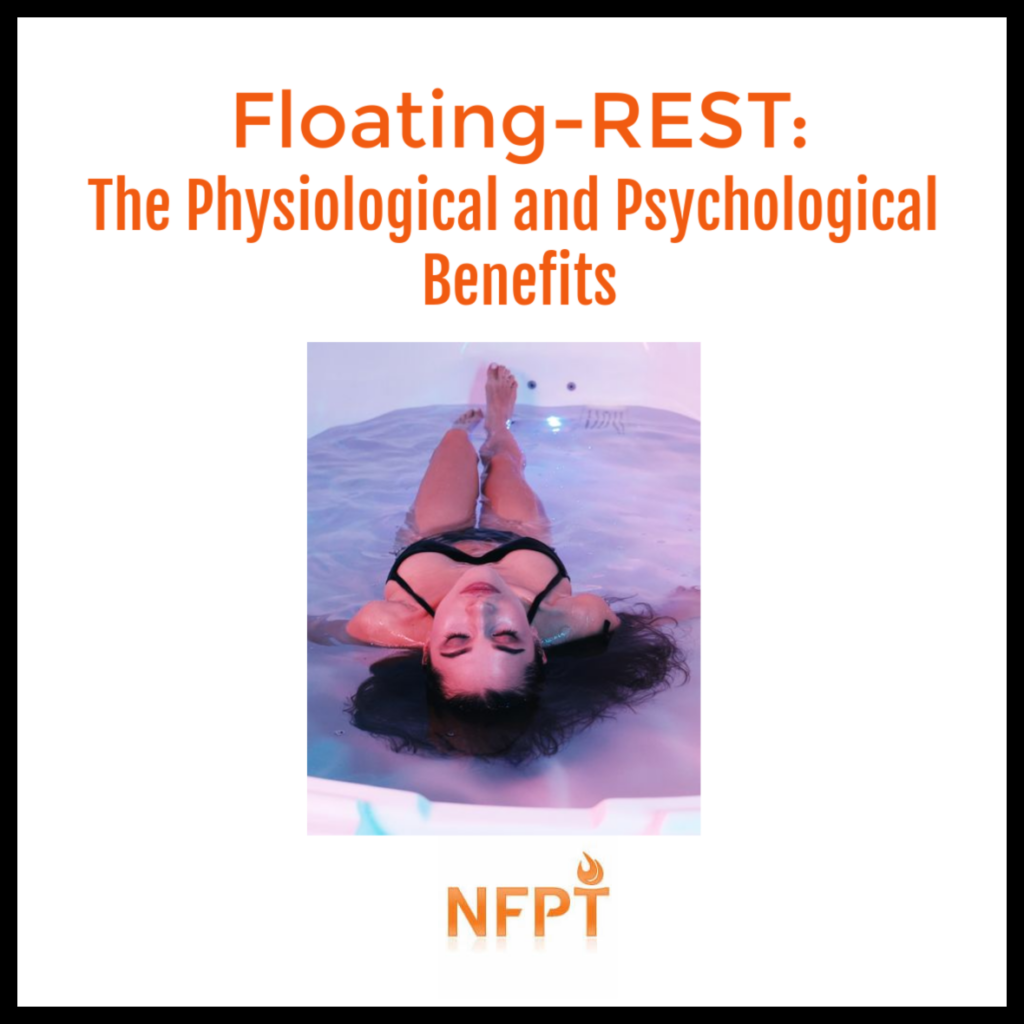If you haven’t already experienced the growing-in-ubiquity flotation therapy you most likely know someone who has or even have seen a spa or two pop up in your community. What do we know about this flotation treatment and is it worth exploring?
What is Floating?
In 1977 John C. Lilly invented flotation-REST (restricted environmental stimulation technique) also known as floating. You are suspended in a pool of water filled with Epsom salt at a higher concentration than that of the Dead Sea. The room is void of sound, light, and touch to help the body dissolve into complete relaxation. The water temperature is 93.5 degrees which is equal to skin temperature.
Since it’s founding the research has been ongoing. The benefits found in the research increase with each study. Floating has been found to help with psychological and physiological issues.
Physiological Benefits: Floating was found to lower levels of cortisol, lower blood pressure, have an impact on blood lactate levels, and have an overall higher impact on the recovery of the body with fewer limitations than most other recovery tools used by recreational & professional athletes.
Psychological Benefits: Floating is a great complement to psychotherapy as it helps with relaxation, stress management, reduces anxiety, has a positive effect on well-being, and overall performance. It’s been found to help even those with very high-stress issues that have difficulty calming the mind through other forms of relaxation such as meditation, yoga, Tai Chi, Qui-Gong, and so on.
The Impact on Recovery
Acute Activity
One study looked to determine if flotation-REST aided in recovery after maximal eccentric knee extension and flexion. They found in this study that floating had a significant impact on blood lactate and perceived pain.
Rest is an important part of the recovery process after working out but it is very often overlooked. There are many methods we can use to aid in our recovery that include: massage, cryotherapy, contrast water immersion therapy, active recovery, compression garments, and good ‘ol fashioned sleep. These methods have a small impact on recovery with risks of further discomfort or muscle damage, such as in the case of massage therapy. Some can be expensive.
Floating has a higher impact on recovery and has fewer limitations. When you are floating you are helping to reduce anxiety, chronic pain, hypertension, manage stress, lower blood pressure, lower the heart rate, increase muscle relaxation, and have an overall sense of better well-being.
Strenuous Activity
In a research article, Rehabilitation through REST, written for the Floating Summit 2012 in Goteborg, Sweden, researchers touch on how sports psychologists discovered that flotation tanks provide more effective control over stress, enhanced mental training, and improved recovery after strenuous workouts and races.
In this research, it was found that participants experienced increased well-being, relaxation, mild euphoria, increased originality, and improved sleep. In addition to the reduction of stress (lower levels of cortisol), anxiety, and lower blood pressure.
How does it work?
Traditionally, floating has been done in a float tank. A small pod or tank filled with water at a temperature of 93.5 degrees and filled with Epsom salt to a salinity level higher than that of the Dead Sea. Epsom salt is used for its magnesium sulfate benefits.
Magnesium is one of the major minerals needed in the body. However, many of us do not get enough magnesium. The benefit of Epsom salt is that when it dissolves it releases magnesium and sulfate ions that get absorbed through our skin. It helps with muscle tension, inflammation, and pain by helping the body use glucose and lactic acid.
It aids in reducing stress by helping the brain produce neurotransmitters that help the heart and the nervous system regulate. When you think about what happens in the body during the stress response, the heart and the nervous system are at the center.
When you add the benefits of Epsom salt with the benefits of a float tank it makes sense as to why floating has become a new therapeutic method of recovery both physiologically and psychologically.
Alternatives for Nay-sayers
Many people reading this may think “why can’t I just take a magnesium supplement and call it a day?” You are very welcome to take a magnesium supplement and be on your way. Especially, if you claustrophobic and the thought of experiencing a float tank may seem like an unpleasant ordeal. You can definitely take a salt bath at home after a long day to reap similar recovery benefits.
The purpose of Flotation-REST is to help us disconnect the mind from our day to day lives as well as assist the body in physical recovery. It’s about slowing down, putting away the phone, taking a break from our clients, and recenter ourselves.
Taking a supplement every day does not address the need to slow down. It aids in allowing ourselves to stay overscheduled and overcommitted. When we soak in our own tub we can hear all the noise going on within or around our home. The phone oftentimes follows us to the tub and we lay there scrolling through emails, social media, and whatever else we can find to distract us.
The float tank, or float room in some instances, (more locations are making the floating experience a room due to the complaints of claustrophobia) assists you in disconnecting. It helps get the mind get focused on the present and let go of thinking about past or future events.
If a client inquires about floatation, either give it a try yourself or expound upon the benefits and few downsides that makes it worth the gamble.
References
https://www.healthline.com/nutrition/epsom-salt-benefits-uses
http://www.floating-verband.de/pdf/Kjellgren_Rehabilitation_2012.pdf


